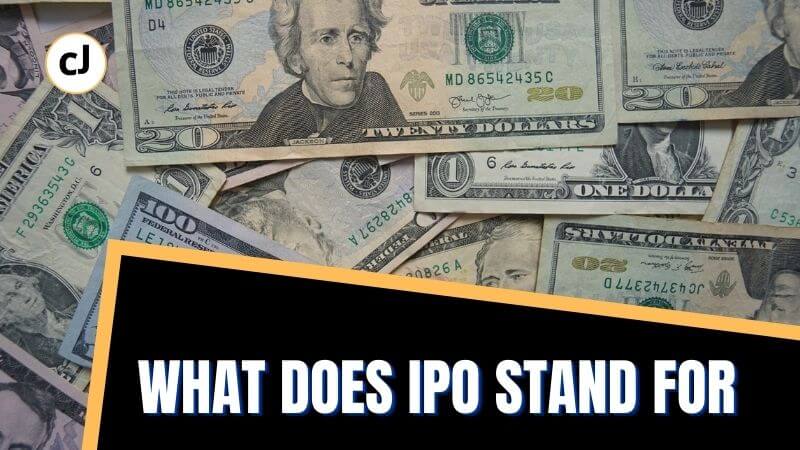If you are interested in the equity market, stocks, or planning to expand your business horizon, you have probably heard about IPOs and have probably had this question in mind – What does ipo stand for?
Between 2000 to 2020, there have been 5,782 IPOs registered, whereas 2021 broke the record-high with 1058 IPOs, beating 480s in 2020.
But, what is an IPO? And how does it help a company to grow? Today we will discuss and detail all about IPO and how it can benefit both investors and companies in their financial growth. If you’re a business owner and just heard the term IPO for the first time, and looking to learn more about it and what does IPO stand for or mean really, this article will help you.
Let’s get into it.
Quick Navigation
What does IPO Stand for? What is an IPO anyway?
IPO is an acronym for Initial Public Offering. It is when a private company goes public. In this process, the private company’s share is open to the market, which anyone can buy.
In simple words, before an IPO, a private company has limited shareholders. Mostly, this number would surround the founder, founding members, family, friends, along with angel investors and venture capitalists, etc.
But, during an IPO, when the company opens up to public investments, the number of shares increases significantly. Hence, you can buy shares directly from the company and become a direct shareholder of the company.
The primary aim of the company is to raise equity capital. Like a company plan for an IPO, it aims to increase its horizon and transform into a much bigger existence. IPO helps the company gather significant funds and raise capital to enlarge its business circle.
Let’s move forward to know more about how an IPO works.
How Does IPO Work?

By now, you probably have a clear understanding of what IPO is. IPO is a significant step for companies. A company is mostly considered private before an IPO. At this stage, the company mostly had very few numbers of shareholders, mostly directly related to it.
But, the after-IPO scene is vastly different. At this stage, the company opens up to the public, asking them for investing in the capital. It allows the corporation to raise a lot of funds to support the growth and expansion of their business. Hence, the responsibility increases, as well as the liabilities.
Reaching the stage of IPO is not so easy. It mostly takes a company to gain Unicorn status. A unicorn is when a private company’s valuation comes to $1 billion. However, if a company has a strong reputation and has proven itself trustworthy, it can soon open up to the public market and raise equity funds.
As soon as it is ready to comprehend SEC regulations and provide all benefits to the public shareholders, the company will start showing its interest in IPO through advertisements.
The most significant benefit of an IPO is that it opens up a vast spectrum of investors who would be willing to invest in a company’s capital by purchasing their shares.
Advantages of IPO for a Company – Why Does a Company Go Public?
When a company goes public, it attains several benefits out of it. Here are some of the IPO benefits for companies that justify why a company goes public.
1. Fundraising
The most notable benefit or advantage of an IPO is that it provides a company with lump sum capital. This reason is so alluring that many companies don’t even consider other benefits before going public. As described earlier, during an IPO, a company shows its interest in public funding.
These funds can provide a growing company with endless support. The corporate can use the money to build new buildings, hire new employees, invest in research and technologies, and whatnot. In short, an IPO can transform a company’s trajectory and make it something huge like Bytedance.
2. Provides an Exit Opportunity
When a company reaches the IPO stage, it has a lot of stories to tell. The stories are mostly of the stakeholders- primary investors – who have seen it grow from day one. In most cases, they have spent days without seeing any profit at all.
Now that the company has grown so big, some stakeholders may see it as an opportunity to receive financial compensation for these many years of “sweat equity.” In most cases, the initial public offerings can raise $100 million, making this idea even more luscious.
However, in order to do so, the stakeholders have to sell their shares of the now-public company on a secondary exchange.
3. Publicity
When a company decides to go public, it receives not just a lot of attention but also a lot of credibility. Most IPOs bring a lot of buzz and publicity around them, which is great for exposure. It brings a strong brand image and provides the company with proper exposure that helps in sales and marketing. Most importantly, all these activities make the company more trustworthy and starred on the stock market.
The IPO Procedure – Stepping to IPO
What is the procedure for an IPO? A company has to follow a number of steps for an initial public offering. The steps are:
Step 1: Selection of an Investment Bank/Underwriter
The first step is to select an underwriter or an investment bank. The underwriters help the company to set various details in order. For example, an underwriter helps the company
- set a fund expectation (the money the company is willing to raise from the public).
- Select the type of securities to be offered.
- Fix the initial share price.
Step 2: Team Formation
Following the underwriter selection, the company now creates a team consisting of underwriters, lawyers, CPAs, and SEC experts.
Step 3: Preparing Documentation
The underwriter then prepares an initial prospectus, which includes the issuing company’s offer price information and the effective date. Following the creation of the red herring prospectus, the issuing company and underwriters go on roadshows with the shares to the general public to attract potential investors.
Step 3: Pricing
Once the SEC approves the IPO, it decides the pricing of its shares (the selling price of the shares by the issuing company) and the number of shares based on several factors the day before its effectiveness. The factors are:
- The success/failure of the roadshow
- The market condition
- The objective of the business
IPOs are often underpriced to ensure that the issue is entirely subscribed. Underpricing also compensates the investors for their risk for investing in an IPO company.
Step 4: Availability of Shares
Once the formalities are done, the issuing company opens the share to the public to purchase on the effective date mentioned on the prospectus. Those, who want to purchase a share, have to fill out the application form and submit it on the given date.
Step 5: Transition to Market Competition
It is the final step of an IPO process which starts after 25 days (once the silent “quiet mandated” by the SEC is over). After the 25-day period has passed, underwriters can submit estimates for the issuing company’s earnings and valuation.
As a result, after the issue is made, the underwriter takes on the responsibilities of advisor and evaluator.
Advantages of Investing in an IPO?
Why should you consider investing in an IPO? People invest in an IPO for a variety of reasons. Some of these are:
Faster Earning
Investing in an IPO can be a game-changer for you. If a company is drawing capital from the market and it goes big in the coming years, there’s a fat chance that you will be making quite a lot out of your investment. If the company grows, you will grow too.
Long-Term Goals
Investing in an IPO is a sort of equity investment. It serves a long-term purpose. Once invested in an IPO, you will gain long-term profit, which will help you fulfill your future goals. There are risks attached to an IPO. But, the profits are enormous and sufficient.
First-Mover: Buy Cheap, Grow Big
When a company has declared its IPO, it will offer its shares at a much cheaper rate. It is especially beneficial provided the company gets big in the coming years. You should be fast because the prices will increase once the shares go to the secondary market.
Conclusion
It can be said that IPOs are tricky for both the company and the investors. Once a company decides to go public, it receives enormous funding from the open market. However, it also has to follow rules and expenses, which weren’t there before.
On the other hand, investing in an IPO has several risks. But, more than all of these, if a company performs well and makes money, all its shareholders will gain enormous profit out of it. That said, this was all on what IPOs stand for. Do let us know if there is something more you would like to know.
Till then, stay safe, stay wealthy!

